Being an arborist isn't just about climbing trees and working with nature—it's a profession that carries inherent dangers, thereby highlighting the critical importance of safety gear maintenance. We always treasure the tranquillity that trees bring into our lives, but we rarely think about the diligent efforts of arborists who toil tirelessly to maintain this beautiful landscape. From tall trees to precarious branches, arborists brace themselves against the face of danger, all while armed with their most trusted companion: their safety gear. However, the strength and reliability of this gear do not merely happen by chance. It's a product of regular maintenance, stringent safety protocols, and an unyielding commitment to safety above all. But how can arborists ensure the longevity of their safety equipment? Let's explore this in the following sections.
Role of Safety Gear Maintenance in Arboriculture
For individuals in the arboriculture industry, routine safety gear maintenance is a conversation that cannot be avoided. A simple overlooked glitch in a chainsaw, for example, could lead to a hefty injury; however, with regular inspections and necessary certified training, arborists can ensure maximum safety and efficiency while performing their day-to-day tasks.
Significance of Regular Inspection
Conducting regular inspections on safety gear is a compulsory script written in the DNA of every safety-oriented arborist. Regular checks are not just about ticking boxes on a checklist but rather, they bring about several enormous benefits.
- Detection of premature wear and tear: Regular checks help in identifying prematurely worn-out gear, reducing the risk of unexpected failures and ensuring better safety.
- Elongation of gear lifespan: The lifespan of safety gear can be significantly elongated by detecting malfunctions early and making timely repairs.
- Efficiency boost: Well-maintained safety gear operates at its peak capability, resulting in increased efficiency of the arborist and hence, faster task completion.
Notably, regular inspections are also instrumental in adhering to the recognized safety regulations and industry standards in arboriculture. Hence, they play a significant role in minimizing accidents and improving the overall safety of the working environment.
Necessity of Certified Training
Although regular inspections are vital, it’s equally necessary for arborists to acquire certified training in handling and maintaining their safety gear. The effectiveness of inspections and upkeep efforts considerably enhances with proper training, as it offers the following advantages:
- Arming arborists with ample knowledge: Certified training equips arborists with knowledge and insights essential for understanding the unique attributes and limitations of different pieces of safety gear.
- Promoting proper usage: It helps in promoting the best safety practices and the correct usage of equipment, thereby reducing the chances of equipment misuse.
- Training on emergency protocols: Such courses also train arborists on the emergency measures to take if their safety gear fails, thereby preparing them for such unplanned eventualities.
Therefore, it's not just enough to understand the importance of quality products for arborists, one must also appreciate the essence of appropriate use and routine care for these tools.
Undoubtedly, ensuring proper maintenance and effective usage of safety gear serves as a cornerstone in the field of arboriculture. It's not merely about fulfilling industry regulations or extending the lifespan of the equipment, but it's also about safeguarding the lives of the arborists and guaranteeing a secure and efficient working environment. Indeed, the true value of safety gear lies in its optimum functionality rather than just its existence!
Practical Tips for Safety Equipment Maintenance
Keeping your safety equipment in prime condition isn't just a matter of compliance with industry regulations. It's a matter of ensuring your safety, and that of your colleagues. From harnesses and belts to ropes, eye protection gear, climbing gloves, and the appropriate clothing, every piece plays a critical role in keeping you out of harm's way. This article will explore the best practices for maintaining and testing these vital safety tools.
Harnesses and Belts
Harnesses and safety belts are cornerstones of personal protective equipment (PPE). They secure workers in precarious positions, preventing falls and injuries. However, they can only do their job if they're correctly maintained.
- Regularly inspect the straps for signs of wear like fraying, tears, or loose stitches.
- Buckles and D-rings should be assessed for deformities and corrosion.
- Always store them in a dry, well-ventilated space to avoid mildew or damage from direct sunlight.
Ropes
Ropes are essential for many safety systems, particularly in industries like construction, offshore drilling, or window cleaning.
- Examine them regularly for fraying, kinks, discoloration, and signs of abrasion.
- Ensure no chemical spills or heat damage have occurred.
- Apart from regular inspections, consider professional rope testing at intervals prescribed by industry standards.
Eye Protection Gear
Whether you're facing dust clouds, splintering wood, or sparks, your eyes need to be well-protected. Safety glasses or goggles are often your first line of defense.
- Clean lenses after every use to ensure clear vision.
- Evaluate for scratches, which can impair your sight, or cracks that may result in shattering.
- Check the comfort and fit to prevent slippage during work.
Ear Muffs
A safe workplace isn't just about preventing injury; it's also about controlling noise levels. Ear muffs are crucial for occupations with a high decibel work environment, like construction or aviation.
- Inspect for cracks or physical damages.
- Ensure the soundproofing material inside each ear cup is intact.
- Replace worn-out cushions for optimal noise reduction.
Climbing Gloves
Climbing gloves not only provide a better grip but also safeguard your hands from potential harm.
- Regularly check gloves for excessive wear, torn seams, and flexibility.
- Ensure they're dry before every use to prevent slipping.
- Cleaning them in line with manufacturer instructions prevents build-up of dirt.
Appropriate Clothing
Lastly, appropriate clothing is crucial for personal safety. Workers need clothes that protect them without limiting their mobility.
- Check clothing for tears, loose seams, and signs of wear.
- Consider fabric's resistance to chemicals, fire, or specific environmental hazards of your industry.
- Pay attention to fit; ill-fitting clothes can cause discomfort and add risk.
As the adage goes: "An ounce of prevention is worth a pound of cure." This underscores the importance of maintenance when it comes to safety equipment. Make routine checks and timely replacements a part of your schedule - it's not just about ticking off a box in a safety audit, it's about preserving lives and fostering a culture of safety.
Let's not forget that the utility of your equipment depends significantly on regular inspections including for harnesses, belts, and ropes, often forming the backbone of safety measures. Always remember: equipment is replaceable, lives are not! Let’s ensure reliability and safety become second nature in our work environment.
Safety Protocols and Arboriculture Operations
Successful arboriculture operations aren't just about knowledge and skill. It's about keeping people safe while helping trees thrive. Safety, after all, is essential at any job site, whether it's a dense forest or a suburban backyard. In the world of professional arboriculture, many guidelines dictate how operations are conducted safely. While these guidelines are vast and varied, they share one feature: they all enforce the common goal of avoiding injuries and fatalities.
ANSI Z 133.1 Standards
Among these is the ANSI Z 133.1, a comprehensive standardization regulation that assumes a frontline role in shaping arboriculture operations. ANSI Z 133.1 is more than just a certificate - it's the bedrock to all safety protocols in arboriculture. Drawing from a range of expertise, these standards elucidate the safety requirements for procedures like pruning, trimming, bracing, and removal of trees, helping arborists carry out their tasks safely and effectively.
OSHA Standards
Next up is the OSHA standard - a familiar name in occupational safety across multiple industries. In arboriculture too, OSHA has its say. It addresses the unique hazards tree care professionals face, with standards designed for record-keeping, and general industry. By offering guidance on everything from hazardous energy control to effective communication of hazards, these standards ensure that arborists can go about their jobs without putting their safety or others' at risk.
Proper Use of Mobile Equipment and Tools
Last but far from being least is one of the most practical facets of safety protocols - the proper use of mobile equipment and tools in arboriculture operations. Packed with potent power, these tools can do wonders in the hands of trained professionals - and wreak havoc in unskilled or careless ones. Guidelines on their operation ensure that teams utilize these resources responsibly and effectively. They cover everything from daily inspections and routine maintenance to correct handling and operation, as well as the necessary personal protective equipment.
Remember, when it comes to arboriculture safety, every detail counts. From widely recognized standards like ANSI Z 133.1 and OSHA to specifics related to equipment handling, these guidelines are meant to uphold work safety. By embracing these protocols, we contribute to a safer, healthier, and more productive arboriculture industry.
Considerations in Choosing Safety Gear
Selecting adequate safety gear is a crucial step for those aiming to strike the right balance between comfort and security while performing potentially hazardous tasks like arboriculture. The safety harness, helmets, eyewear, gloves, and fall protection gear are all pivotal elements to consider. However, their effectiveness doesn't solely rely on the product's quality; its comfort, adjustability, and proper usage also play a prominent role.
Comfort and Adjustability of Harness
The safety harness you choose is your lifeline when you're suspended meters above ground level. Harnesses range in style and functionality, and each carries a specific set of features designed for different kinds of tasks. However, one common factor in choosing any type of harness is comfort and adjustability.
The right harness for arborists should:
- Be comfortable: Wearers often needed to don these harnesses for extended periods. Therefore, having a harness that provides adequate padding and support helps prevent discomfort, fatigue, and potential injuries.
- Be adjustable: Different tasks require different levels of mobility. An adjustable harness allows users to modify the fitting, allowing a wider range of movements depending on the task in hand.
- Meet safety standards: It's critical to ensure that the safety harness has been tested and meets all the necessary safety standards.
Importance of Protective Helmets, Eyewear, and Gloves
Helmets, eyewear, and gloves form an integral part of any safety routine. Their importance stems from their role in protecting some of the most vulnerable parts of the body - the head, eyes, and hands.
Here’s why each of these pieces of safety gear is essential:
- Helmets: Protect the user from any overhead hazards, including falling branches, tools, or unintentional hits.
- Eyewear: Protect the eyes from debris, dust, or any flying elements that might pose a risk and impair the wearer's vision during work.
- Gloves: Prevent potential injuries from sharp equipment, rough materials, or harmful substances while providing a more secure grip.
Proper Usage of Fall Protection Gear
Choosing the right fall protection gear is a significant aspect. However, their effectiveness often heavily relies on the user’s ability to use them correctly. Equipment like lanyard, anchoring devices, and other fall protection devices need proper setup and the user's familiarity regarding their application.
Seamlessly integrating these safety practices when elevated at dangerous heights can mean the difference between a safe, efficient day at work or an unexpected disaster. Hence the old mantra, "Safety first" is not a mere slogan in such scenarios but a way of life. It is vital to remember that no shortcuts exist when it comes to safety.
In the end, choosing the right gear for the task at hand, including helmets, full-body harnesses, and eye protection, is crucial for safety. Recognizing this requirement is the first step towards making informed, conscious decisions about personal safety, ensuring a secure and productive environment for you and your team.
Importance of Pre-Work Assessments
Safety should be the number one priority for every tree care professional, even before setting foot on the job site. An essential aspect of this safety-oriented approach is conducting a thorough pre-work assessment. Tree care professionals who perform this imperative step demonstrate due diligence and commitment to their craft and the well-being of everyone involved. This section will focus on the importance of pre-work assessments, emphasizing their role in identifying potential hazards and selecting appropriate gear.
Identifying Potential Hazards
Foremost in the pre-work routine is the identification of potential hazards. Dangers lurking in our daily work environment can take several forms, all of which can pose significant threats to personal safety and overall project delivery. Here are major potentially dangerous elements to watch out for:
- Structural Issues: The tree's stability is critical to consider. Features to watch out for include dead tree limbs, rot, hollows, and diseases.
- Environmental Factors: Elements like weather conditions, wind direction, and soil stability can all play a significant role in the tree care professional's work day.
- Surrounding Obstacles: Nearby power lines, buildings, fences, and even pedestrians can present challenges that must be effectively addressed to ensure a safe and productive work zone.
"Awareness is the greatest defense," as they say. Thus, having a keen eye for these hazards helps tree care professionals plan their courses of action and avert preventable mishaps.
Selecting Appropriate Gear
Of course, proper hazard identification is only half the battle. The other half lies in selecting the appropriate gear, which can be the difference between a safe and productive day and a hazardous one. Tree care professionals should think about gear relative to the unique challenges each job entails. Here are some factors to keep in mind:
- Tree Type and Height: Different tree types and varying heights will require different tools and equipment.
- Employee well-being: Make sure all gear fits correctly and comfortably to prevent body strain or discomfort.
- Work Duration: Choose durable gear that can withstand the duration of the job without compromising safety or efficiency.
Overall, the importance of pre-work assessments in the field of tree care cannot be overstated. By identifying potential hazards and selecting appropriate gear, tree care professionals can place themselves, and by extension their teams, in the best position to work safely and effectively. These foundational features of pre-work assessments highlight why they should always be integral to the work process. Let's stay safe out there, folks!
Safety Measures during Tree Work
The dominance of greenery in our backyards is primarily due to our relentless efforts to preserve nature. Nonetheless, overgrown trees or hazardous branches have their own perils that necessitate professional intervention. During tree work or arboriculture, safety must be the prime concern. A lapse in precautions or negligence can lead to serious consequences. It's crucial to have safety measures in place - from having a fellow arborist onsite to monitor procedures to the use of appropriate personal protective equipment (PPE) during every season - to ensure safety for everyone involved.
Having a Safety Monitor On-Site
It's not uncommon to encounter uncertain scenarios while working with trees. Windy days may sway tree branches unpredictably. Tools might malfunction, or one could lose footing while scaling tall trees. In such instances, it's undeniable that having an extra pair of eyes trained to understand these dangers is invaluable. A fellow arborist, trained for such scenarios, or a 'Safety Monitor' can make all the difference in maintaining a secure working atmosphere. They can assess the surroundings, make thoughtful interventions, and ensure safety measures are upheld diligently.
- Alertness to surroundings: A safety monitor is always on high alert checking for potential hazards.
- Double-checking equipment: They ensure the equipment in use is in good working condition.
- Implementing safety protocols: Safety monitors make certain that the mandatory guidelines for safety during tree work are strictly implemented.
- Emergency handling: In case of any accidents, immediate help can be provided by the safety monitor.
Having a fellow arborist to assist during tree work could be the factor that keeps a hazardous situation from escalating into a calamity.
Usage of Appropriate Personal Protective Equipment during Winter
When one thinks about tree work during wintertime, protection against chilling temperatures is the first thing that comes to mind. However, appropriate personal protective equipment goes far beyond than just keeping one warm. Essential pieces of winter PPE for arborists include thermal wear, chainsaw helmets, anti-vibration gloves, and ear protection among many others. Let's delve into a few important ones:
- Chainsaw helmets: It is paramount for any arborist to wear a helmet when working with a chainsaw. It protects against flying debris, falling branches, and, of course, wayward chainsaw movements. The helmet also has a visor for face protection and earmuffs for auditory safety.
- Anti-vibration gloves: Using chainsaws and other machinery can lead to a condition called Hand-Arm Vibration Syndrome (HAVS) due to prolonged exposure to vibration. Anti-vibration gloves significantly reduce the risk of HAVS.
- Ear Protection: Constant exposure to the loud noises from chainsaws and wood chippers can cause permanent hearing loss. Therefore, using ear protection is non-negotiable.
- Insulated wear: Shielding one's body from low temperatures is important to prevent hypothermia and ensure comfort while working in winter months.
"Prevention is better than cure" – Desiderius Erasmus
This ancient adage applies well to the context of arboriculture safety as well. Utilizing appropriate personal protective equipment and having a safety monitor ensures you are well prepared for any situation. In the battle against the unanticipated, proactiveness always triumphs.
Conclusion
In the ever-demanding field of arboriculture, a safety-first approach is of paramount importance. Emphasizing regular maintenance of safety gear, adhering to certified training, and having keen knowledge about potential hazards can materially reduce the risk of injury at the worksite. But let's not forget the role of high-quality, durable safety gear itself.
At Rain Gear Pro, we understand these needs. We offer a top-of-the-line range of chainsaw safety pants that combine protection, comfort, and longevity, standing as your reliable companion in challenging work conditions.
Arboricultural safety is not a one-time investment but an ongoing commitment. Remember, your safety gear is your lifesaver - treat it accordingly.
Frequently Asked Questions
-
What safety gear do arborists use?
Arborists use a variety of safety gear including helmets, safety glasses, ear protection, gloves, chainsaw chaps, and climbing harnesses with lanyards.
-
How often should safety gear be inspected?
Safety gear should be inspected before each use to ensure it's in good condition. Additionally, a more thorough inspection should be conducted at least once a year or as recommended by the manufacturer.
-
How do I clean and maintain my safety gear?
Follow the manufacturer's instructions for cleaning and maintenance of your safety gear. Most often, it involves wiping down the gear with a damp cloth, using mild soap if necessary, and allowing it to air dry. Pay special attention to straps, buckles, and any wear or tear.
-
Can I repair my safety gear if it gets damaged?
It's generally recommended to replace safety gear if it gets damaged. This is because even small damages could compromise the gear's effectiveness and put you at risk. Check with the manufacturer for repair options, but it's usually best to err on the side of caution and invest in a new piece of gear.
-
Where should I store my safety gear when not in use?
Store your safety gear in a cool, dry place away from direct sunlight and chemicals. It's best to hang helmets and harnesses to maintain their shape and avoid any potential damage. Keep them in a dedicated area to ensure easy access when needed.



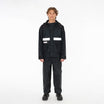



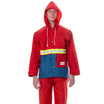


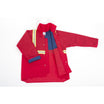

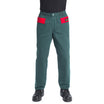









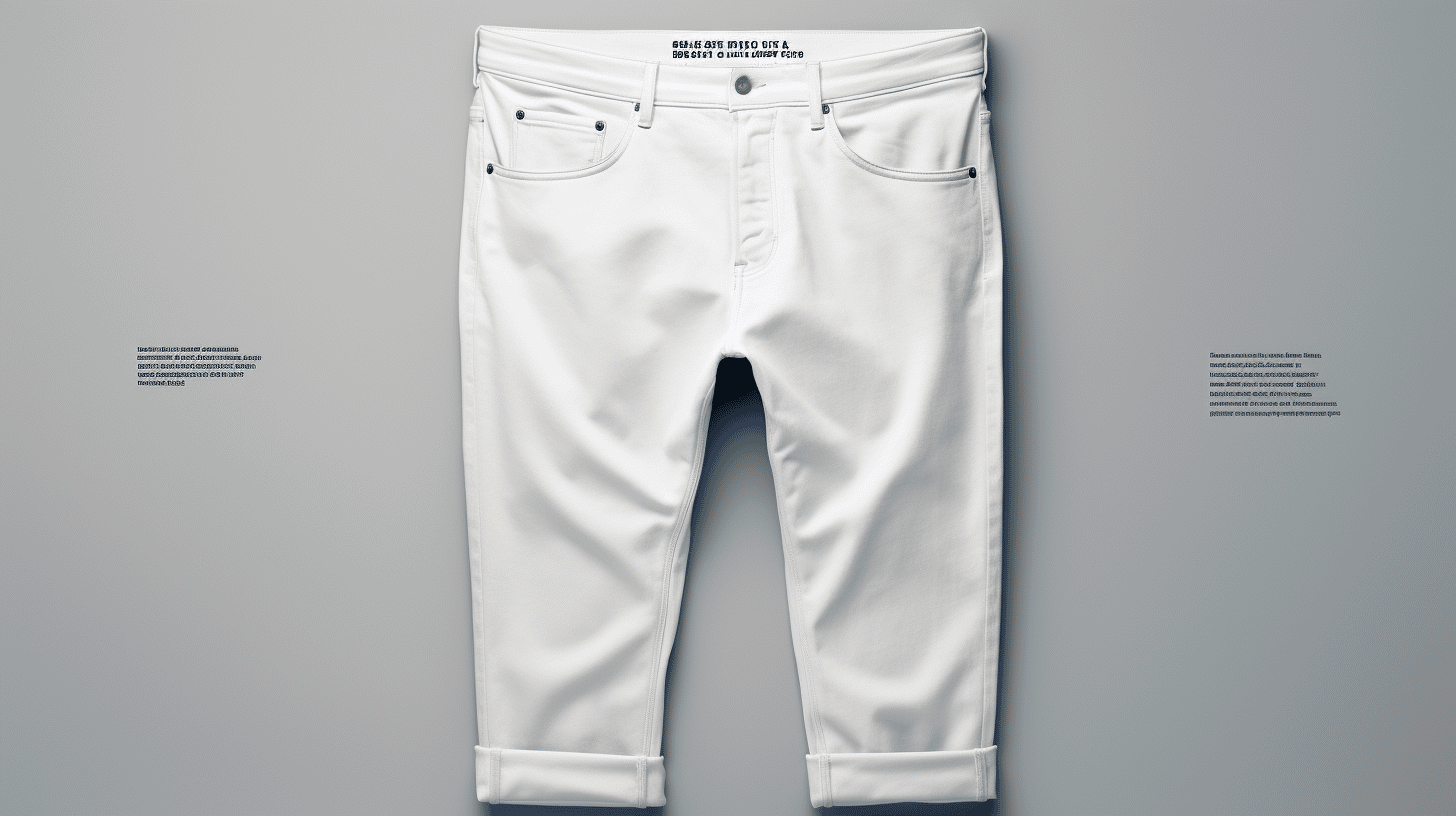
Leave a comment
This site is protected by hCaptcha and the hCaptcha Privacy Policy and Terms of Service apply.